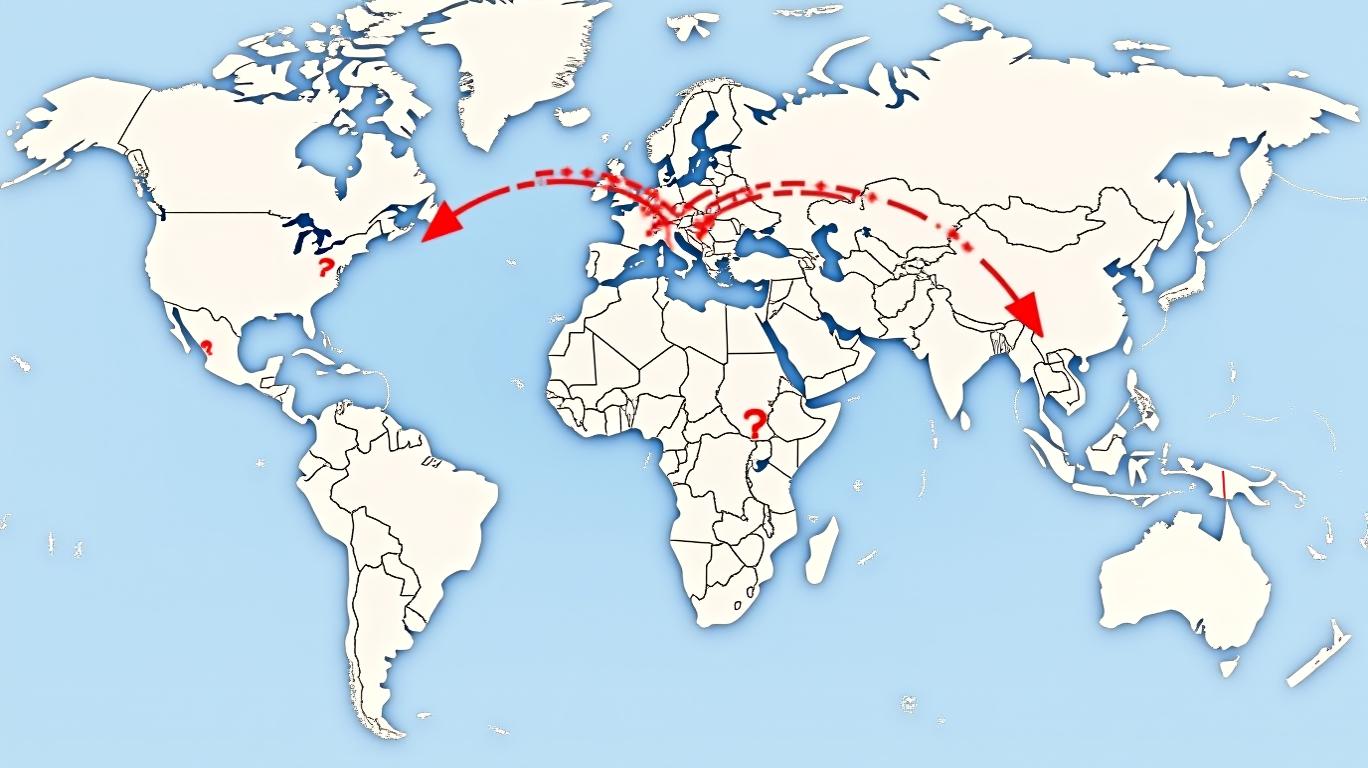Why Aluminum Producers Are Avoiding the U.S. Despite Soaring Tariffs: The Hidden Cost of Uncertainty
The U.S. aluminum industry finds itself at a crossroads in 2025. Tariffs, initially designed to shield domestic producers and incentivize production relocation, have instead triggered a cascade of unintended consequences. While the Trump administration’s Section 232 tariffs on aluminum—later escalated to 50% for select countries—were meant to rebalance trade and boost U.S. manufacturing, the reality has been starkly different. Aluminum imports to the U.S. fell by 6.7% year-over-year in February 2025, with Canada’s shipments plummeting 18.35% and the UAE’s crude metal imports dropping 38.4% month-over-month. Yet, despite these measures, global producers remain reluctant to relocate to the U.S. The root cause? A toxic mix of policy uncertainty and market volatility that has paralyzed investment decisions.
The Paradox of Punitive Tariffs
The goal of tariffs was clear: reduce reliance on foreign aluminum and create domestic opportunities. However, the abrupt and inconsistent application of these tariffs—such as the sudden doubling of Canada’s tariff to 50%—has instead bred chaos. Cross-border trucking costs with Canada surged 40–50%, and the U.S. aluminum spot market nearly froze as buyers and sellers held back amid fear of overnight premium spikes.

The result is a “wait-and-see” environment where businesses avoid long-term commitments. Even the “America First Investment Policy,” which promised streamlined regulations to attract investment, has struggled to offset the risks of operating in a tariff-wracked market.
Market Paralysis and the Cost of Volatility
The economic toll extends far beyond trade numbers.
estimates that expanded tariffs will add $22.4 billion to aluminum product costs in the U.S., with derivative goods like automotive parts and appliances absorbing an additional $29 billion in expenses. These costs are already rippling through the economy: new car prices rose 8.4%, and the average household lost $3,800 in purchasing power in 2025 due to tariffs.Meanwhile, the aluminum spot market’s collapse underscores the broader instability. Hedging strategies, typically a tool to manage price swings, have become ineffective as tariff-driven volatility in regional delivery costs outpaces traditional risk-mitigation methods.
Why Producers Stay Away: The Uncertainty Premium
The key reason aluminum producers are not relocating is not due to lack of incentive but the steep “uncertainty premium” now embedded in U.S. trade policy. Companies face three major barriers:
- Policy Whiplash: Sudden shifts, like Canada’s tariff reversal, erode trust in regulatory consistency.
- Operational Risks: Logistical bottlenecks and soaring cross-border costs make even compliant supply chains uneconomical.
- Market Fragility: The U.S. aluminum market’s near-paralysis—a spot market in limbo, buyers hesitant to commit—saps confidence in stable demand.
These factors create a high-risk, low-reward environment for investors. Even firms exploring “melt and pour” exemptions to qualify for tariff relief are doing so cautiously, given the complexity of U.S. content requirements and the threat of further policy changes.
The Broader Economic Toll
The ripple effects are staggering. The U.S. economy now faces a 0.6% long-term GDP contraction—equivalent to $160 billion annually—while Canada’s GDP is projected to shrink 2.1% over the same period. Global retaliation, including China’s 0.2% GDP decline, further complicates trade relationships.
For investors, the lesson is clear: punitive tariffs without a coherent strategy to stabilize markets risk exacerbating economic pain without delivering the promised benefits. Aluminum producers are not moving to the U.S. because the costs of operating in a volatile, unpredictable environment outweigh any short-term gains.
Conclusion: A Lesson in the Cost of Uncertainty
The 2025 U.S. aluminum saga is a cautionary tale about the perils of trade policies that prioritize symbolism over stability. While tariffs may temporarily boost domestic prices, the resulting uncertainty stifles investment, disrupts global supply chains, and inflicts lasting damage on both American and foreign economies.
The data is unequivocal: U.S. households are poorer, industries are less competitive, and global trade is more fractured—all without meaningful relocation of production. For investors, this underscores the need to prioritize geopolitical and policy risks alongside traditional financial metrics. In an era of trade-related instability, the real cost of protectionism is not just economic but also strategic: it erodes the very foundations of long-term growth and stability.

Comments
No comments yet